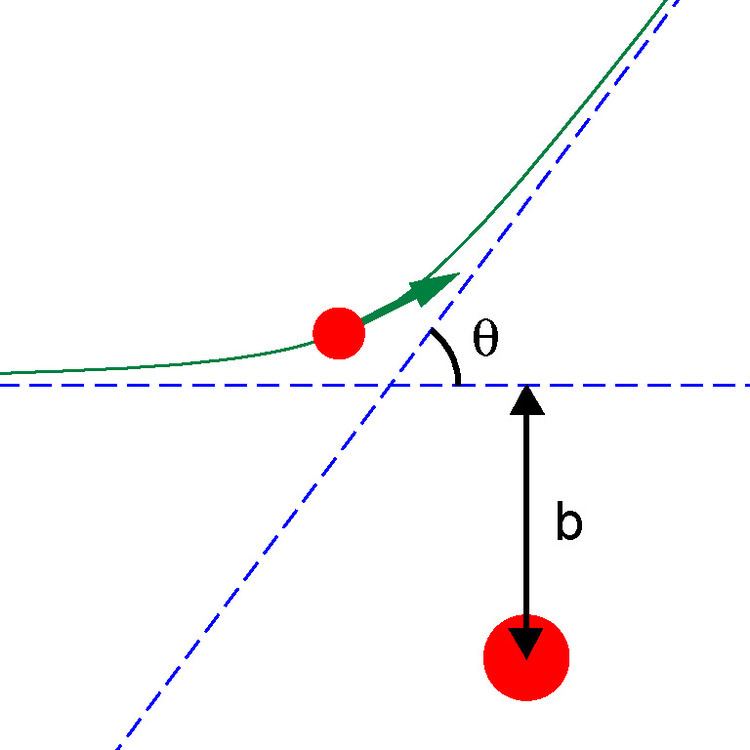 | ||
The impact parameter
Contents
The impact parameter is related to the scattering angle
where
Scattering from a hard sphere
The simplest example illustrating the use of the impact parameter is in the case of scattering from a hard sphere. Here, the object that the projectile is approaching is a hard sphere with radius
Collision centrality
In high-energy nuclear physics — specifically, in colliding-beam experiments — collisions may be classified according to their impact parameter. Central collisions have
Because the color force has an extremely short range, it cannot couple quarks that are separated by much more than one nucleon's radius; hence, strong interactions are suppressed in peripheral and ultraperipheral collisions. This means that final-state particle multiplicity is typically greatest in the most central collisions, due to the partons involved having the greatest probability of interacting in some way. This has led to charged particle multiplicity being used as a common measure of collision centrality (charged particles are much easier to detect than uncharged particles).
Because strong interactions are effectively impossible in ultraperipheral collisions (UPCs), they may be used to study electromagnetic interactions — i.e. photon-photon, photon-nucleon, or photon-nucleus interactions — with low background contamination. Because UPCs typically produce only two- to four final-state particles, they are also relatively "clean" when compared to central collisions, which may produce hundreds of particles per event.
